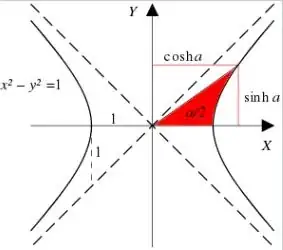From Euler's identity one may obtain that, $$\sin x=\dfrac{e^{ix}-e^{-ix}}{2i}$$ $$\cos x=\dfrac{e^{ix}+e^{-ix}}{2}$$
However, it looks quite same to the hyperbolic functions such as $$\sinh x=\dfrac{e^x-e^{-x}}{2}$$ $$\cosh x=\dfrac{e^x+e^{-x}}{2}$$ where the imaginary unit, $i$, is omitted.
Now my question is, what's the interconnection between them? One may answer $\sinh x=-i\sin ix$ or, $\cosh x=\cos ix$ but that doesn't help me to see why it's true. Or even the bigger question what was the necessity to introduce hyperbolic functions? I expect you to help me with this.
P.S. I'm in college. I am seeking for intuition rather than tons of formal theorem.
